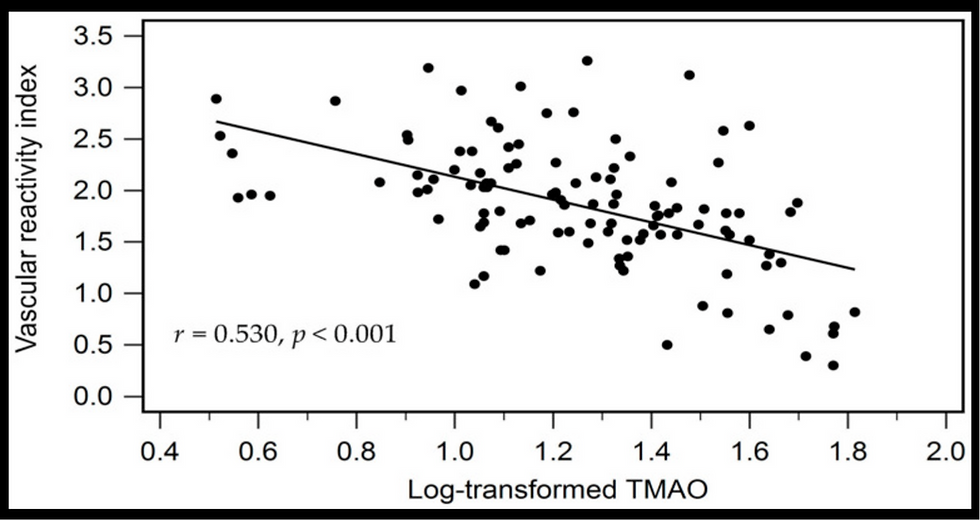A serving of blueberry acutely improves peripheral arterial dysfunction in young smokers
- heartlung
- Jan 16, 2023
- 3 min read
and non-smokers: two randomized, controlled, crossover pilot studies
Food Funct. 2017 Oct 11. doi: 10.1039/c7fo00861a. [Epub ahead of print] A serving of blueberry (V. corymbosum) acutely improves peripheral arterial dysfunction in young smokers and non-smokers: two randomized, controlled, crossover pilot studies. Del Bo’ C1, Deon V1, Campolo J2, Lanti C1, Parolini M2, Porrini M1, Klimis-Zacas D3, Riso P1. Author information 1Università degli Studi di Milano, Department of Food, Environmental and Nutritional Sciences, Division of Human Nutrition, Milan, Italy. cristian.delbo@unimi.it.2CNR Institute of Clinical Physiology, CardioThoracic and Vascular Department, ASST Great Metropolitan Hospital Niguarda, Milan, Italy.3School of Food and Agriculture, University of Maine, ME, USA. Abstract Several studies have documented the important role of polyphenol-rich foods in the modulation of vascular remodelling and function. This study aimed to evaluate the capacity of a single portion of blueberry (V. corymbosum) to acutely improve peripheral arterial dysfunction in a group of young volunteers. Twenty-four healthy males (12 non-smokers and 12 smokers) were recruited for two different randomized, controlled, crossover pilot acute studies. In the first study, non-smokers were exposed to a control treatment (C; 300 mL of water with sugar) and a blueberry treatment (BB; 300 g of blueberry). In the second study, smokers underwent 3 different protocols: (1) – smoking treatment (S); (2) – control treatment (CS; 300 mL of water with sugar + smoking); (3) – blueberry treatment (BS; 300 g of blueberry + smoking). Each treatment (1 day long) was separated by a one week washout period. Blood pressure, peripheral arterial function (reactive hyperemia index, RHI, a marker of endothelial function) and arterial stiffness (digital augmentation index, dAix and dAix normalized by considering a heart rate of 75 bpm, dAix@75) were measured before and after each treatment. In the first study, the consumption of blueberry and control treatment acutely increased peripheral arterial function in the group of non-smokers. The improvement in RHI was higher and significantly different after blueberry treatment compared to the control treatment (54.8 ± 8.4% BB vs. 28.2 ± 8.3% C; p = 0.01). No effects were observed for markers of arterial stiffness, blood pressure and heart rate. Acute cigarette smoke significantly increased blood pressure and heart rate, while no significant effect was registered in peripheral arterial function and stiffness. The intake of blueberry and control treatment before a cigarette did not counteract the increase in blood pressure and heart rate, while it significantly improved peripheral arterial function. In particular, a significant increase was observed following BS (35.2 ± 7.5% RHI; p = 0.02) and CS treatments (34.6 ± 11.9% RHI; p = 0.02) when compared to only smoking treatment. No difference between BS and CS was detected. In conclusion, the intake of blueberry and control treatments acutely improved peripheral arterial dysfunction both in smoker and in non-smoker subjects. Further studies should be performed to confirm the results obtained and reveal the potential mechanisms of blueberry in the improvement of endothelial function. PMID:29019364DOI:10.1039/c7fo00861a Mol Nutr Food Res. 2017 Oct 12. doi: 10.1002/mnfr.201700601. [Epub ahead of print] Blueberry Metabolites Attenuate Lipotoxicity-Induced Endothelial Dysfunction. Bharat D1, Cavalcanti RRM1, Petersen C1, Begaye N1, Cutler BR1, Costa MMA1, Ramos RKLG1, Ferreira MR1, Li Y1, Bharath LP1, Toolson E1, Sebahar P2, Looper RE2, Jalili T1, Rajasekaran NS3, Jia Z4, Symons JD1,5, Pon Velayutham AB1. Author information Abstract SCOPE: Lipotoxicity-induced endothelial dysfunction is an important vascular complication associated with diabetes. Clinical studies support the vascular benefits of blueberry anthocyanins, but the underlying mechanism is unclear. We tested the hypothesis that metabolites of blueberry anthocyanins attenuate lipotoxicity-induced endothelial dysfunction. METHODS AND RESULTS: Human aortic endothelial cells (HAECs) were treated for 6 h with either: (i) the parent anthocyanins (malvidin-3-glucoside and cyanidin-3-glucoside); or (ii) the blueberry metabolites (hydroxyhippuric acid, hippuric acid, benzoic acid-4-sulfate, isovanillic acid-3-sulfate, and vanillic acid-4-sulfate), at concentrations known to circulate in humans following blueberry consumption. For the last 5 h HAECs were treated with palmitate or vehicle. HAECs treated with palmitate displayed elevated reactive oxygen species generation, increased mRNA expression of Nox4, chemokines, adhesion molecules, and IκBα, exaggerated monocyte binding, and suppressed nitric oxide production. Of note, the damaging effects of palmitate were ameliorated in HAECs treated with blueberry metabolites but not parent anthocyanins. Further, important translational relevance of these results was provided by our observation that palmitate-induced endothelialdysfunction was lessened in arterial segments that incubated concurrently with blueberry metabolites. CONCLUSION: Our findings indicate that the vascular benefits of blueberry anthocyanins are mediated by their metabolites. Blueberries might complement existing therapies to improve vascular complications. This article is protected by copyright. All rights reserved. This article is protected by copyright. All rights reserved. KEYWORDS: blueberry metabolites; endothelial dysfunction; inflammation; nitric oxide; vascular effects Endothelial Function Scientific Update Sponsored by Endothelix Inc.
![Lipoprotein(a) levels predict endothelial dysfunction in maintenance hemodialysis patients: evidence from [VENDYS] vascular reactivity index assessment](https://static.wixstatic.com/media/dac531_5285607cc591409a9d83746f042af7c6~mv2.png/v1/fill/w_980,h_980,al_c,q_90,usm_0.66_1.00_0.01,enc_avif,quality_auto/dac531_5285607cc591409a9d83746f042af7c6~mv2.png)


Comments